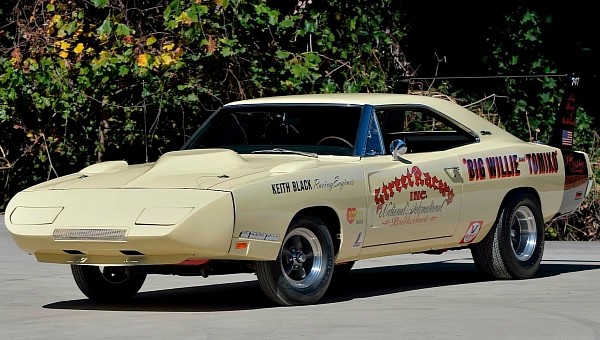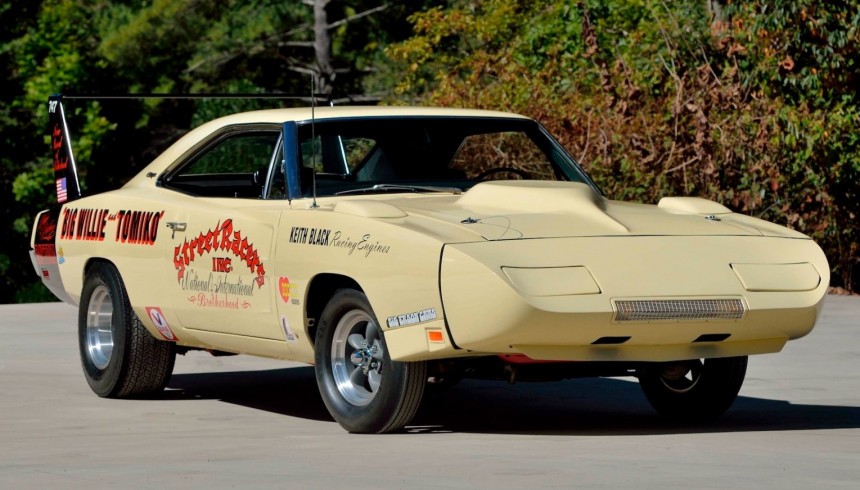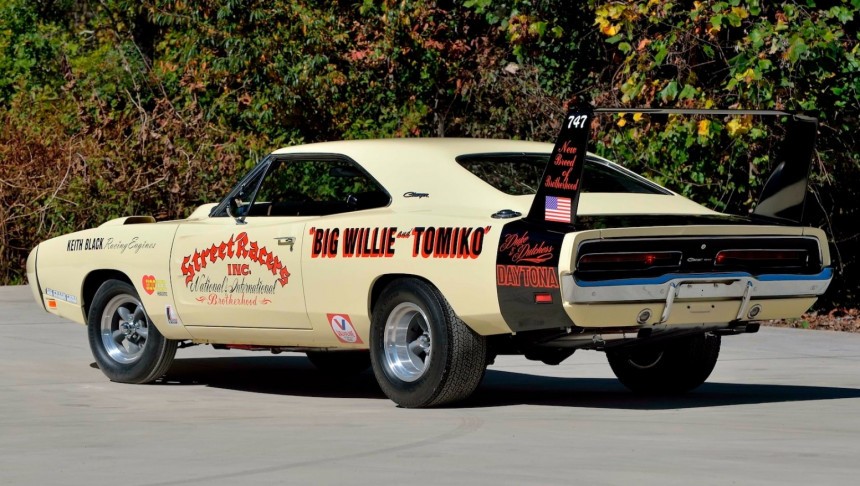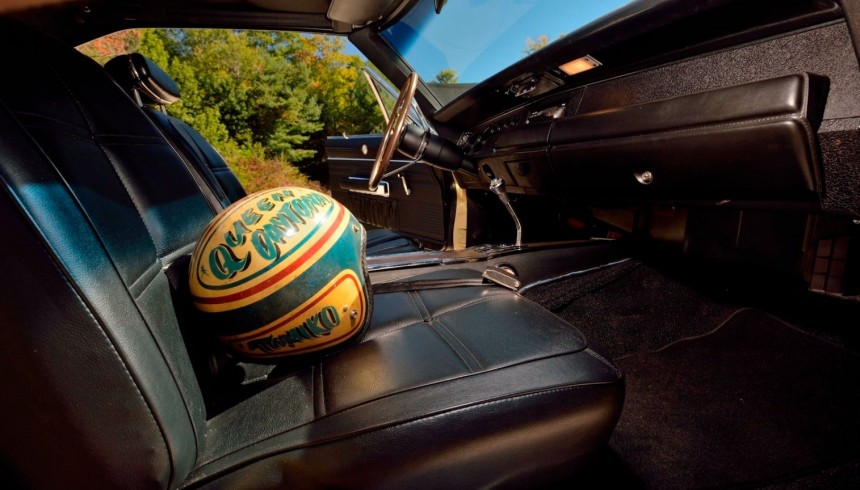In September 2022, Dodge unveiled the 2023 Charger King Daytona, a limited-edition muscle car. Part of the "Last Call" special editions that sent the four-door sedan into the history books, it's also a tribute to William "Big Willie" Robinson, a prominent street racer in the 1960s and 1970s.
What's the company's and the nameplate's link to the drag racer? Well, "Big Willie" owned and raced no fewer than three 1969 Dodge Charger Daytonas. And needless to say, the 2023 King Daytona is a proper send-off for the current Charger. But "Big Willie" was more than just a random drag racer from the muscle car era.
Born and raised in New Orleans, Robinson moved to Los Angeles in the early 1960s after he found his 1953 Oldsmobile 98 with its headlights and windows smashed and its tires slashed as the result of a racially motivated attack. Struggling with financial difficulties, "Big Willie" went to work at a body shop before joining the local street racing scene.
Drafted in the army during the Vietnam War and discharged in 1966, Robinson returned to an even more troubled Los Angeles due to the Watts riots of 1965. The city's worst unrest until the Rodney King riots of 1992, the Watts riots took place in the Watts neighborhood of Los Angeles from August 11 to 16, 1965.
The uprising began after the police roughed up a 21-year-old African-American man pulled over for drunken driving. The riot, which saw no fewer than 14,000 members of the California Army National Guard called in for help, resulted in 34 deaths, more than 3,000 arrests, and over $40 million in property damage.
The event prompted "Big Willie" to create the International and National Brotherhood of Street Racers, an association aimed at stopping both racism and police brutality through drag racing. Everything was put together with support from the Los Angeles Police Department, whose officers first attended the events undercover.
As things progressed and the organization grew larger, everyone agreed that it was a good way for people to get rid of their anxiety by racing or attending races on weekends. The Brotherhood became so popular that it was allowed to open its own race track, the Brotherhood Raceway Park, in 1974.
The race track had positive effects on the community. According to a retired LA County sheriff's deputy, "every time that track was open, crime went down." "Virtually all the street racing stopped because now they had a place to go," he told the Los Angeles Times in 2012.
"Big Willie" spent many years racing Dodge Charger Daytonas. Unleashed in 1969 as a homologation special for NASCAR duty, the Daytona wasn't exactly prepped for drag racing in stock form, but that didn't stop William from running the quarter-mile with a huge wing behind him. His wife, Tomiko, did the same and the "Big Willie" Daytonas quickly became a symbol of Robinson's "if you're racing, you're not killing" mantra.
Come 2022 and two of three Daytonas previously owned by "Big Willie" are no longer around. Tomiko's green car was totaled in a race crash in Canada, while Willie's orange example was dismantled following its retirement from track duty. But the third Daytona, while not as famous, is still alive and kicking thanks to a rotisserie restoration.
Known as the "Duke and Duchess Daytona," this Mopar made it into "Big Willie's" garage sometime in the early 1970s. Raced until the late 1970s, it was decorated similarly to the couple's previous Daytonas and also fitted with a race-spec Keith Black HEMI V8 engine. The car was refitted with its original 440-cubic-inch (7.2-liter) V8 before it was sold to Mopar collector Gary French in 2002.
The "winged warrior" changed a couple more owners until it ended up with Corey Owers of Ogilvie Collision, who did a comprehensive but hybrid restoration. And by that, I mean that he opted to go for the condition the car was in during "Big Willie" ownership rather than a factory-correct specification.
So while it has the numbers-matching 440 V8 under the hood, it still sports the "Brotherhood of Street Racers" livery and the bulged hood. It's also finished in cream rather than the original R4 Red paint.
Is it a fully original 1969 Dodge Charger Daytona that's worth north of $1 million? No! But it's a historically important Mopar linked to a great man whose dream was to unite everyone, regardless of skin color, religion, and political views, through motorsport. And that's heartwarming, to say the least.
Oh, and this Daytona is set to go under the hammer between January 4 and 15. Part of The Gary Edwards Wing Car & Mopar Collection, which includes no fewer than 12 Dodge Charger Daytonas and Plymouth Superbirds, it will cross the block for an estimated $300,000 to $400,000 at Kissimmee 2023.
Born and raised in New Orleans, Robinson moved to Los Angeles in the early 1960s after he found his 1953 Oldsmobile 98 with its headlights and windows smashed and its tires slashed as the result of a racially motivated attack. Struggling with financial difficulties, "Big Willie" went to work at a body shop before joining the local street racing scene.
Drafted in the army during the Vietnam War and discharged in 1966, Robinson returned to an even more troubled Los Angeles due to the Watts riots of 1965. The city's worst unrest until the Rodney King riots of 1992, the Watts riots took place in the Watts neighborhood of Los Angeles from August 11 to 16, 1965.
The uprising began after the police roughed up a 21-year-old African-American man pulled over for drunken driving. The riot, which saw no fewer than 14,000 members of the California Army National Guard called in for help, resulted in 34 deaths, more than 3,000 arrests, and over $40 million in property damage.
As things progressed and the organization grew larger, everyone agreed that it was a good way for people to get rid of their anxiety by racing or attending races on weekends. The Brotherhood became so popular that it was allowed to open its own race track, the Brotherhood Raceway Park, in 1974.
The race track had positive effects on the community. According to a retired LA County sheriff's deputy, "every time that track was open, crime went down." "Virtually all the street racing stopped because now they had a place to go," he told the Los Angeles Times in 2012.
"Big Willie" spent many years racing Dodge Charger Daytonas. Unleashed in 1969 as a homologation special for NASCAR duty, the Daytona wasn't exactly prepped for drag racing in stock form, but that didn't stop William from running the quarter-mile with a huge wing behind him. His wife, Tomiko, did the same and the "Big Willie" Daytonas quickly became a symbol of Robinson's "if you're racing, you're not killing" mantra.
Known as the "Duke and Duchess Daytona," this Mopar made it into "Big Willie's" garage sometime in the early 1970s. Raced until the late 1970s, it was decorated similarly to the couple's previous Daytonas and also fitted with a race-spec Keith Black HEMI V8 engine. The car was refitted with its original 440-cubic-inch (7.2-liter) V8 before it was sold to Mopar collector Gary French in 2002.
The "winged warrior" changed a couple more owners until it ended up with Corey Owers of Ogilvie Collision, who did a comprehensive but hybrid restoration. And by that, I mean that he opted to go for the condition the car was in during "Big Willie" ownership rather than a factory-correct specification.
So while it has the numbers-matching 440 V8 under the hood, it still sports the "Brotherhood of Street Racers" livery and the bulged hood. It's also finished in cream rather than the original R4 Red paint.
Oh, and this Daytona is set to go under the hammer between January 4 and 15. Part of The Gary Edwards Wing Car & Mopar Collection, which includes no fewer than 12 Dodge Charger Daytonas and Plymouth Superbirds, it will cross the block for an estimated $300,000 to $400,000 at Kissimmee 2023.



















